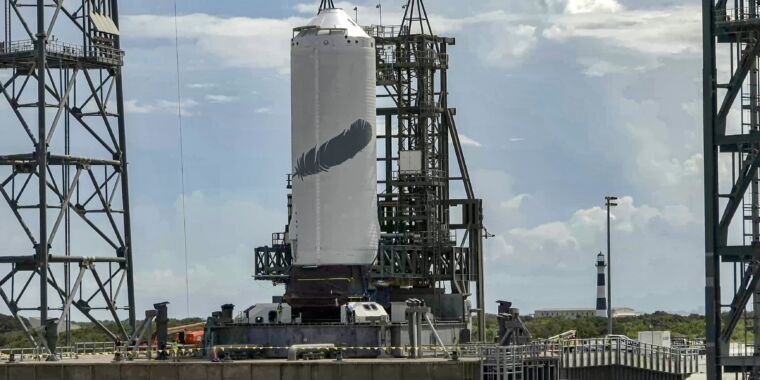
Blue Origin
NASA and Blue Origin announced Friday that they have agreed to delay the launch of the ESCAPADE mission to Mars until at least the spring of 2025.
The decision to cancel a mid-October launch attempt was prompted by a deadline to begin loading hypergolic propellant onto the two small ESCAPADE (Escape and Plasma Acceleration and Dynamics Explorers) spacecraft. While it is theoretically possible to offload fuel from these vehicles for a future launch attempt, multiple sources told Ars that such an activity would pose a significant risk to the spacecraft.
Forced to make a decision about fueling, NASA decided against it. While the two spacecraft were otherwise ready for launch, it was unclear whether the New Glenn rocket would be ready to go.
Waiting for the rocket
NASA got the first launch of the New Glenn rocket, developed by Blue Origin, at a significant discount. The mission managers, University of California, Berkeley's Space Sciences Laboratory, always understood that there were timeline risks to launching on New Glenn.
Blue Origin appears to have been working with some urgency this year to prepare its massive rocket for its first launch. But when the company missed a key target of hot firing the rocket’s upper stage in late August, NASA delayed fueling the ESCAPADE mission. Now, with a Mars launch window closing next month, NASA won’t fuel the spacecraft until next spring, at the earliest.
Blue Origin, founded by Amazon’s Jeff Bezos, successfully rolled the second stage of New Glenn onto its launch pad at Launch Complex-36 in Florida on Tuesday. The company is now targeting a hot-fire test of the second stage on Monday, Sept. 9.
At the same time, preparations for the first stage of the rocket are almost complete. All seven BE-4 engines of the rocket have arrived at the launch site after acceptance tests. Engineers and technicians are currently attaching the engines to the first stage of the vehicle.
Blue Origin will now shift to launching a prototype of its Blue Ring transfer vehicle on New Glenn’s maiden launch, with the intent of testing the vehicle’s electronics, avionics and other systems. Blue Origin is targeting the first half of November for this launch. This test flight will also serve as the first of three “certification flights” for New Glenn, which will qualify the vehicle to carry national security payloads for the U.S. Space Force.
A sense of urgency
It’s been nearly a year since Bezos tapped former Amazon executive Dave Limp to lead Blue Origin. Bezos tasked the company’s new CEO with creating a sense of purpose to get New Glenn flying as quickly as possible. Bezos has made a launch this year a high priority.
Limp expressed his sense of urgency in an email to Blue Origin employees on Friday.
“We can't take our foot off the gas pedal here,” Limp wrote. “Everyone's work to get us to NG-1 flight this year is critical and I'm so grateful for everyone's tireless dedication to making this happen.”
As for ESCAPADE, the mission could launch in the spring of 2025. While the “Mars window” only opens every 18 to 24 months, there are complex trajectories by which a payload launched in the spring of 2025 could reach the Red Planet. It’s also possible that NASA and Blue Origin will ultimately wait until the next Mars window opens in November 2026 to launch the mission.

